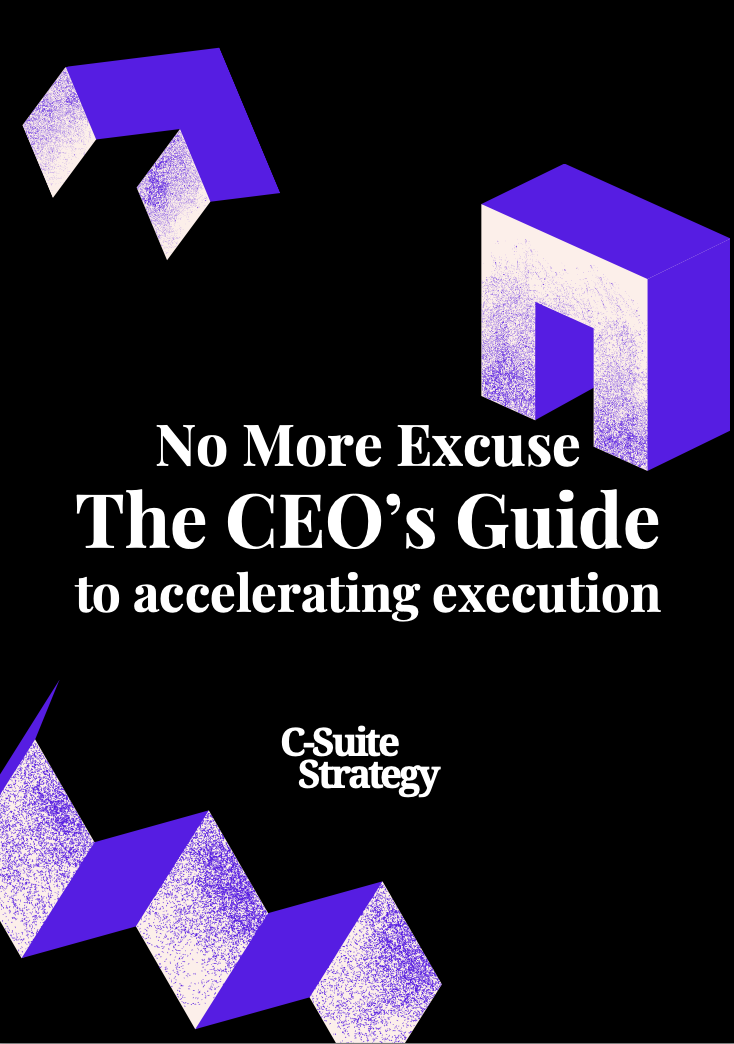
The Importance of Creativity in Leadership
Unleashing Creativity: The Catalyst for Leadership
In the dynamic landscape of modern business, the role of a CEO has evolved to demand more than just strategic acumen. A creative CEO stands as a beacon of innovation, leveraging their unique vision to propel their business toward sustainable growth. Creativity in leadership is not a mere talent; it is a vital component in navigating the complexities of markets and driving enterprises forward in the face of competition and change.
The hallmark of a creative CEO is their ability to synthesize strategic advantages and creative insights. They stand at the intersection of business strategy and innovative thinking, orchestrating a symphony of insights gathered from diverse domains. This fusion of creativity and leadership fosters the ability to build businesses that not only survive but thrive in today’s fast-paced environment.
Creative CEOs foster a spirit of innovation within their companies by supporting a culture that invites new ideas from every corner of the office. This culture is not built overnight but requires a commitment to nurturing talent and providing the tools and programs necessary for ideas to come to fruition. By doing so, they aim to transform business objectives into creative endeavors that are as lucrative as they are imaginative.
By embracing creativity, CEOs not only enhance their leadership skills but also position their company on a path to unprecedented business growth. In a world where businesses are inundated with data, the ability to see beyond numbers and traditional terms is what allows creative leaders to gain a full view of the potential innovations that can lead to a competitive advantage in the marketplace. This, coupled with a strong branding marketing strategy, can help CEOs in building a resilient business that adapts and evolves.
Fostering an Innovative Culture
Creating a Culture of Innovation
In today's dynamic business landscape, a CEO's role isn't limited to traditional management; it extends to fostering an environment where innovation thrives. This requires the creative CEO to embrace and implement strategies that not only allow but encourage new ideas to flourish, helping build business avenues that weren't previously considered.Encouraging creative thinking at all levels starts with a company's mindset. A CEO must champion this by openly supporting experimentation, allowing teams to test out fresh concepts. This isn't just about potentially finding the next big thing; it has profound benefits in terms of employee engagement and motivation. When employees feel that their ideas could contribute to building business success, their dedication and enthusiasm often skyrocket.
Granting employees the credit and space to innovate is essential. This involves acknowledging their contributions and creating support systems within the office that accommodate creative processes. Such initiatives might include a mentorship program or workshops designed to harness creativity-specific skills. By doing so, businesses provide room for individuals to grow business ideas from concept to reality. Additionally, providing a platform for real time collaboration across departments can help bring diverse perspectives into the creative mix, fostering innovation.
Moreover, it is crucial for a CEO to demonstrate commitment to innovation through strategic investment in technology and other resources. Utilizing data effectively allows for informed decision-making that can lead to the development and scaling of new ideas without compromising existing business objectives. For instance, cloud-based solutions can offer small businesses the agility needed to compete in the ever-evolving market. This, coupled with comprehensive branding marketing efforts, ensures sustained growth and helps in building brand awareness.
When businesses cultivate an environment where ideas are valued and explored, they are better positioned to achieve financial independence while also supporting broader goals. This is especially important for women-owned ventures that seek to establish a foothold in traditionally male-dominated sectors. Promoting a work culture that empowers employees to take charge enhances control future business growth and can have a transformative impact.
In the competitive arena of modern business, creating such an innovative culture isn't merely about staying afloat; it differentiates leaders and companies as progressive, adaptable, and forward-thinking. This entails a delicate balance, integrating the creative aspects of leadership described here while maintaining the structured approach discussed in other sections. For a deeper insight into how strategy can be shaped according to unique business needs, check out this article about the complex topic of choosing between organic and inorganic strategies.
Balancing Creativity with Business Objectives
Finding the Sweet Spot: Creativity Meets Business Objectives
In the corporate landscape, a creative CEO has the unique challenge of harmonizing innovation with tangible business goals. The essence of leadership in this context is not just to conjure up vibrant ideas, but to strategically build businesses around them. This balance is crucial as businesses navigate the interplay between creative solutions and the rigorous demands of business growth. One notable aspect is the role of creativity in branding marketing. A creative CEO can leverage this to build brand identity that resonates with clients, ensuring the business stands out in a crowded marketplace. It’s not just about colorful logos or catchy slogans; creativity extends to how a brand communicates its values and builds a connection with customers. Moreover, data plays a vital role in aligning creative endeavors with business objectives. In today’s real-time business environment, CEOs need to use data analytics to preside over office-based decisions that maximize the impact of their creative processes. This ensures that creative strategies are not only innovative but financially viable, leading to sustainable business finances. By maintaining a full view of market trends and client needs, creative ideas can be transformed into profitable products and services. Women-owned businesses, for example, can particularly benefit from creative leadership that champions financial independence while recognizing the nuances of various market segments. Creative CEOs in such contexts often develop programs that cater to specific demographics, enhancing their client base through targeted, data-driven initiatives. The art of building business is a dynamic journey, requiring the creative CEO to control future growth while managing current resources efficiently. Embracing innovation without losing sight of the essential aspects of business building, such as maintaining stable cash flow and managing payment terms effectively, is key. Here, leveraging technology for creative solutions becomes imperative, providing the support structure needed for complex problem-solving. For those looking to delve deeper into strategies that align creativity with core business objectives, consider exploring how synergies in telecom M&A can be maximized for insights into balancing innovation with strategic growth.Leveraging Technology for Creative Solutions
Integrating Technology to Drive Creative Solutions
In today's fast-paced business environment, leveraging technology is not just an option but a necessity for the creative CEO. As businesses strive to build brand identity and achieve financial independence, the integration of technology can significantly enhance creative strategies. This involves using data-driven insights to make informed decisions, which can help in building business models that are both innovative and sustainable.
Technology offers a full view of market trends and consumer behavior, enabling CEOs to craft strategies that resonate with their target audience. By utilizing real-time data, leaders can make adjustments to their strategies, ensuring they remain relevant and effective. This approach not only supports business growth but also allows for the creation of tailored solutions that meet the unique needs of clients.
Embracing Digital Tools for Enhanced Creativity
Digital tools play a crucial role in fostering creativity within the office environment. Programs that facilitate collaboration and idea-sharing can help in building a culture of innovation. For instance, cloud-based platforms allow teams to work together seamlessly, regardless of their physical location. This is particularly beneficial for small businesses and women-owned enterprises looking to expand their reach without the constraints of a traditional office setup.
Moreover, technology can aid in branding marketing efforts, providing businesses with the tools needed to control their future and build a strong market presence. By integrating digital solutions, companies can streamline their operations, improve efficiency, and ultimately, enhance their creative output.
Balancing Innovation with Practicality
While technology offers numerous benefits, it's essential for CEOs to balance creativity with practical business objectives. This means considering the financial implications of technological investments and ensuring they align with the company's long-term goals. By maintaining a strategic view, leaders can ensure that their creative endeavors are both innovative and financially viable.
In conclusion, the creative CEO must embrace technology as a key component of their strategy. By doing so, they can support their businesses in achieving sustainable growth and maintaining a competitive edge in the market.
Case Studies of Successful Creative CEOs
Real-World Examples of Creative Leadership
In today's dynamic business landscape, the role of a creative CEO is more critical than ever. These leaders are not just steering their companies towards financial independence but are also redefining what it means to build a business in the modern era. By fostering an innovative culture, they are able to balance creativity with business objectives, ensuring sustainable growth.
One notable example is a CEO who transformed a small business into a global brand by leveraging technology and creative solutions. This leader understood the importance of real-time data and used it to make informed decisions, enhancing the company's branding and marketing strategies. By doing so, they were able to build a brand that resonated with clients and supported business growth.
Another case involves a women-owned business that achieved remarkable success by focusing on creative leadership. The CEO implemented a program that encouraged employees to bring their full creative selves to work, resulting in innovative products that captured the market's attention. This approach not only helped in building business but also in creating a supportive office environment where employees felt valued and motivated.
These examples illustrate how creative CEOs are not just about colorful ideas but are also about building a solid foundation for their businesses. They understand the importance of balancing creativity with business finances, ensuring that their companies remain competitive and financially sound. By doing so, they are able to control the future of their businesses, making strategic decisions that lead to long-term success.














